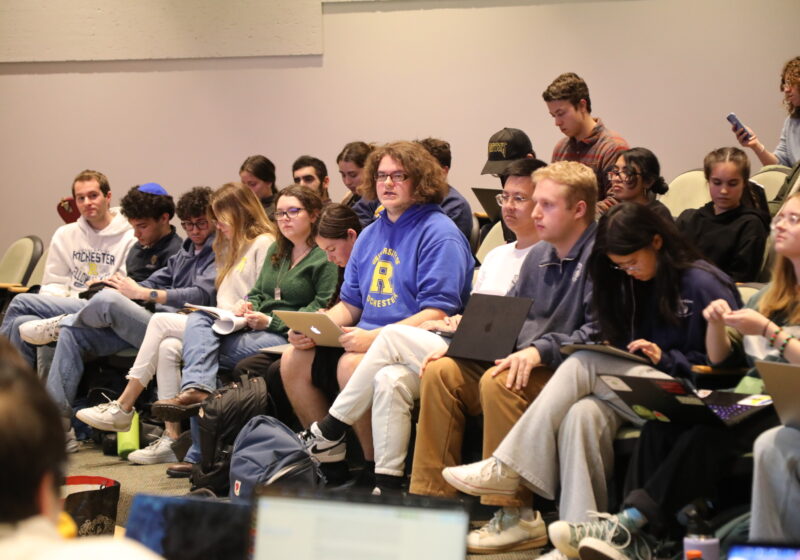The Dryden Theater, the in-house cinema of the George Eastman Museum, specializes in presenting movies, old and new, in the way they were originally meant to be experienced.
Seeing a movie in a theater usually involves a lot of buildup, a sort of drum-roll before the big reveal. With most movies this entails 15 minutes of ads and a couple production company logos, but not at the Dryden.
At the Dryden’s showings of films from decades gone by, the pre-show ritual includes a speaker introducing the film, filling the audience in on history and context. Then comes the familiar dimming of the lights, the slow rise of the curtain, and finally the soft clatter of the projector as it brings an ancient film print bursting to life on screen once again.
Showings occur five nights a week at the Dryden, giving patrons the chance to see bucket-list classics, obscure and foreign films, and the latest indie offerings, all in the format that the filmmakers intended
Jared Case, the curator of film exhibitions at the George Eastman Museum, believes that preserving the experience of viewing films in their original format is just as important as preserving the films themselves.
“The Dryden theater isn’t just about exhibition,” he says. “It’s about preservation. It’s the last step in the preservation process.”
“You collect the film, you conserve it and make sure it’ll stay in good shape for decades at a time, you transfer to a new medium if you have to, and then you exhibit it because if it’s not being seen by people, what’s all that work going into?”
A sizable crowd came out to the Dryden last Saturday for a viewing of the 1968 musical “Funny Girl,” actress Barbra Streisand’s breakout film.
The introductory speaker provided insight into some of the more emotional scenes in the film such as the final song, which, fueled by the dissolution of her romance with co-star Omar Sharif as filming wrapped, was one of Streisand’s most impassioned performances.
The speaker concluded by introducing the print that was to be shown, describing it as “well-loved, much like the film itself.”
The viewing featured an overture, a scratchy sound track, and an even scratchier film print. These rough-around-the-edges aspects were reminders of the age of the film, pulling the audience even further into the experience of the viewing.
“It’s preserving the film, the artifact, but it’s also preserving the experience,” Case says.
“It’s engrossing, it’s encompassing. It’s a huge screen and the sound is around you. You’re inside of it instead of being set away from it. It’s the film, it’s the content, and it’s the experience we’re trying to preserve.”
There’s a striking human element about seeing these films in a theater as well. The immediacy of having people right there beside you experiencing a decades-old piece of history as if it’s premiering all over again is an irreplaceable experience.
“You pick up on these little nuances from people around you. Sometimes people can interpret things in different ways and will make these noises or movements that’ll clue you into something you hadn’t been noticing,” Case notes.
Beyond the screenings of cinema classics, the Dryden offers series of films carefully selected to together inform and tell the story of the context of their creation that no one film could tell alone.
Upcoming series include “Reinventing Hollywood” which, based around a book of the same name by film historian David Bordwell, will showcase filmmakers of the 1940s that brought techniques like voice-overs, multiple protagonists, and flashbacks into the mainstream.
Bordwell himself will be at the Dryden on Thursday and Saturday introducing films to kick off this series and, on Saturday, giving a lecture.
For Halloween this year, Case has selected three foreign horror films all having to do with photography.
These film series’, as well as the dozens of other upcoming viewings at the Dryden can be found online and attended by students for only $5. The theater and the George Eastman Museum itself can be accessed via the Orange Line.
For casual moviegoers and hardcore cinephiles alike, the Dryden offers up an experience hard to find anywhere else: the chance to experience landmark moments in film history as new once again.



